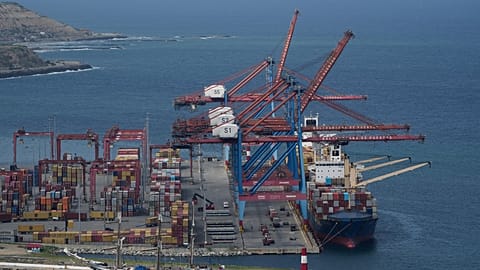OECD nations saw a sharp drop in work-related migration after several years of rapid growth as rich nations scrambled to fill labour shortages.
Migration flows into the world’s rich economies are slowing down, according to an OECD report published on Monday.
Although overall numbers remain historically high, permanent migration to OECD countries slipped by 4% in 2024 after three years of strong growth. Labour-driven migration to the same countries dropped by 21%.
OECD secretary-general, Mathias Cormann, said immigration to OECD countries helped address labour shortages and supported the resilience of OECD economies.
“Effective migration policies are needed to manage associated pressures on public services and facilitate labour market integration of new arrivals,” he said.
Cormann added: “The large labour earnings gaps of immigrants compared with native-born workers highlight the importance of streamlining assessment and recognition of foreign qualifications, and of optimising policies that support language acquisition, job search, and skills development.”
Despite the sharp decline in labour-driven migration, the report found a sustained rise in family and humanitarian migration, placing fresh pressure on integration systems even in countries accustomed to high inward flows. Pressure has notably mounted on housing, education, and welfare services.
Overall, the total of 6.2 million people who settled in member states last year was still about 15% higher than before the pandemic, the report said.
Labour migration retreating
A notable trend in the data is the sharp drop in work-related migration coming after several years of rapid growth as rich nations scrambled to fill labour shortages.
The OECD said the number of people moving to member countries for work fell by roughly a fifth in 2024 compared with the previous year, to about 934,000, as softer labour-market conditions and stricter visa policies in destinations such as the UK took hold.
In several key EU countries, including Germany and the Netherlands, labour migration has now dipped below pre-pandemic levels.
The trend suggests that migration will provide less of a boost to workforce growth than in recent years, though immigrants in many host countries continued to perform well in the labour market. In some countries, the employment rate among immigrants is higher than the level among the native population.
As rich countries grapple with rapidly ageing societies, the OECD warned earlier this year that without more migrants, its member states could see their labour force contract by around 8% by 2060, with median income growth slowing to roughly 0.6% annually.
Even as the pattern of migration inflows evolves, immigration remains a crucial driver of economic growth.


















